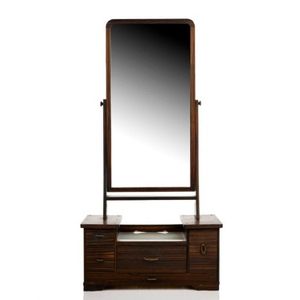Bauhaus Bookcase by Erich Dieckmann, c. 1924
You must be a subscriber, and be logged in to view price and dealer details.
Subscribe Now to view actual auction price for this item
When you subscribe, you have the option of setting the currency in which to display prices to $Au, $US, $NZ or Stg.
- Bauhaus - Bauhaus refers to design concepts that originated at the German art school of the same name that was founded in 1919 by architect Walter Gropius. The school was based on the principles of modernist design, and sought to bridge the gap between art and industry by teaching students how to create functional and aesthetically pleasing designs for mass production.
Bauhaus had a significant impact on modern design and architecture, and is widely considered to be one of the most influential art schools of the 20th century. The school's approach to design emphasized simplicity, functionality, and the use of new materials and technologies. Bauhaus designers sought to create clean, uncluttered designs that were free from unnecessary ornamentation.
Bauhaus had a strong influence on a wide range of artistic fields, including architecture, furniture design, typography, and graphic design. Some of the most iconic examples of Bauhaus design include the Barcelona Chair by Mies van der Rohe, the Bauhaus Building in Dessau by Walter Gropius, and the typography of Herbert Bayer.
Bauhaus was active from 1919 until 1933, when it was forced to close by the Nazi government. However, the school's ideas and principles continue to be influential in design and art to this day. - Provenance - A term used to describe the provable history of an antique or work of art, and thus an additional aid to verifying its authenticity. Provenance can have an inflating effect on the price of an item, particularly if the provenance relates to the early settlement of Australia, a famous person, or royalty. Less significant are previous sales of the item through an auction house or dealer.
This item has been included into following indexes:
Visually similar items

Japanese Art Deco dressing table mirror. Height 76 cm, width 50 cm, depth 24 cm

Rosando mirrored dresser, Blondewood with brass sconces, Australia, c 1950s

Modernist cabinet with sectional compartments, four doors with keys, England, c 1930s, 135 cm high, 130 cm wide, 38 cm deep

A twelve place silver plate cutlery canteen with ivorine handles, Harrison Bros & Howson. In a fitted mahogany case. One carving fork missing, circa 1930.
